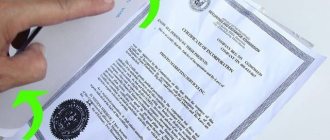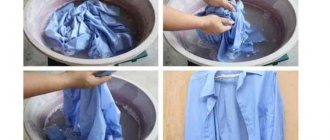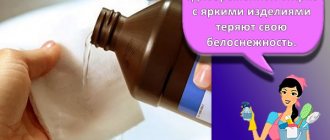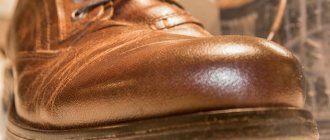Real Uzbek pilaf: the taste and aroma are unsurpassed. But washing a cauldron after a luxurious meal is very difficult. Soot remains on the walls outside, grease remains on the inside, and without proper care, the dishes begin to rust. To prevent this from happening, you need to take care of it. Rust is removed with special mixtures of soap, glue, soda, and vinegar. Scale, soot, and fat are dissolved with detergents followed by boiling. Even a drill with flat attachments is used to clean cast iron.
How to wash a new cauldron before use
Cast iron cauldrons are made using a special pressing method. As a result, technical oils and dirt get into the pores of the metal. To remove them before first use, clean the container with dishwashing detergent and then bake over a fire or stove. After the procedure, treat the surface with oil to create a natural non-stick layer.
How to wash a cauldron after cooking
Cast iron cookware should be cleaned in a special way. Please note that cooked food cannot be stored in a cauldron. After cooking, transfer the dish to another pan.
If the food is not burnt, simply rinse the container with running water without detergents and wipe dry with a paper towel.
If carbon deposits still remain, fill the cauldron 1/3 full with water, close the lid, place on the stove and bring to a boil. After the procedure, all burnt particles will be easily removed.
If you clean the container with detergent, the natural non-stick layer will be washed away and you will have to re-create it. Use this cleaning method only as a last resort.
What not to do
There are several important rules that prohibit certain actions.
- Do not scratch the material from which the cauldron is made.
- Leave burnt food behind after cooking.
- Do not clean in the dishwasher as this will cause rust.
- Be careful with temperature changes; you cannot fill hot containers with cold water and, accordingly, vice versa.
Following these simple tips will help keep your kitchen utensils in pristine condition.
Features of cleaning cauldrons made of different materials
The cauldron can be made of various metals. In order for the dishes to last a long time, it is worth considering the properties of each material when using and cleaning.
Cast iron
The most popular and wear-resistant material. Absorbs oil, due to which a protective non-stick film is formed on the surface. After the first calcination, you cannot use chemicals or hard sponges, otherwise you will have to create a natural non-stick layer again. If the container has an enamel coating, it should not be overheated, otherwise the enamel will be damaged.
Aluminum and duralumin
Aluminum cauldrons have thinner walls, so they do not tolerate exposure to abrasive substances and rough sponges. In addition, such actions usually lead to damage to the non-stick coating.
Copper
Such dishes are now practically not used, due to the peculiar cleaning methods. Copper containers are most often used in traditional Central Asian cuisine.
Non-stick coating
Such dishes are made of stainless steel and coated with a special coating that prevents food from burning. Under no circumstances should cauldrons with a non-stick coating be calcined or washed with abrasives, hard brushes or metal sponges.
Methods for removing carbon deposits using household chemicals
To clean the cauldron from carbon deposits, household chemicals are also used. When using it, protect your hands with rubber gloves. The most suitable products are those for removing stubborn grease and carbon deposits. Directions for use are usually indicated on the packaging. Not all of them are completely washed off from the surface of the dishes, so they later end up in food.
Reference. For cast iron cookware, the use of household chemicals is contraindicated. Abrasive agents destroy the oil film and the coating quickly deteriorates.
The most popular means are:
- "Shumanite." Removes burnt grease, plaque and rust. The active ingredient is alkali. Breaks down dirt in a few minutes and is easily washed off with water.
- "Unique". Cleans stoves, grills, pots, pans from plaque and burnt fat. Breaks down fat, after application it is washed off with a sponge without any physical effort.
- "Unique Grizzly." Instantly removes old dirt, carbon deposits, and soot. Available in spray form, it begins to foam upon contact with the surface. It washes off well with water.
- Dr. Beckmann. Highly environmentally friendly product. Removes any dirt from any surfaces. Forms a water-repellent film.
How to clean a cast iron cauldron
A cast iron cauldron can suffer not only from soot and soot. Sometimes, due to improper handling or care, rust, mold or scale appears on the surface. To remove them, use only suitable means and follow a certain sequence of actions.
From rust
First of all, determine the extent of damage to the surface.
If there are very few corroded areas, use chemicals with abrasive particles and a metal sponge. Rub small rust lesions with half a potato. After all manipulations, rinse the cauldron under running water.
If there is a large layer of rust, first try cleaning the area with detergent. After this, scrub the surface with sandpaper or metal shavings. Use both large abrasives to remove the top layer of rust, and small ones to clean microscopic pores on the surface. You can also remove a thick layer of corrosion using a drill with a flat head or a grinder. Please note that only a specially trained person can work with such tools.
If you don’t have household chemicals or tools at hand, try boiling the cauldron in boiling water with salt. To do this, place the container in a bucket and fill it with water, add salt at the rate of 1 kg per 6 liters of liquid. Place the bucket on the stove and boil the dishes for 7–8 hours.
From scale
If scale has formed on the surface of the cauldron, try removing it with a special kitchen product. Among the available means, citric acid, vinegar and hydrogen peroxide work well against scale. Take enough cleaning agent to cover the entire volume of the container.
From mold
Of course, it is better to prevent mold from occurring. To do this, it is enough to wipe the container dry after each wash. If an unpleasant fungus does appear on the surface, the cauldron will have to be heated on the stove, fire or in the oven.
What means can you clean a cauldron at home?
There are several ways to remove soot and deposits from a cauldron, which every housewife can easily use. It is important to know how to clean a cauldron from carbon deposits correctly.
Glue and soda
To prepare the solution you will need to take water (the volume is determined depending on the size of the dish, the container must be filled to the brim), 1 tube of silicate or office glue and soda (250 g).
All components are combined and mixed well.
Place the cauldron filled with the solution over medium heat and boil for about 1 hour. After the elapsed time, the cauldron with liquid is cooled, and then washed with a soft sponge and dishwashing detergent.
For reference! The method is suitable for aluminum and cast iron products.
Activated carbon
The drug copes well with the remains of burnt food. The tablets are used in crushed form (their quantity depends on the degree of contamination, usually 1-2 plates are enough).
Activated carbon for cleaning the cauldron.
Cover the surface of the boiler with homogeneous crumbs and three washcloths. Place some of the tablets on the bottom and leave for 2 hours. Wash off the remaining activated carbon with a liquid product. All contaminants come away from the walls of the dishes on their own.
Lemon acid
The cleaning method does not require large expenses. All you need is to purchase citric acid. To obtain a solution, 40 g of powder must be combined with 1 liter of water. Pour the resulting liquid into a cauldron, place on low heat and simmer for about 30 minutes. Remove any remaining carbon deposits using a sponge.
Plaque is easily removed with citric acid.
Glue and soap
As you know, laundry soap copes with any dirt. For greater effect, add stationery glue. To clean the product inside and out, you need to take a bar of soap (72%) and PVA glue (50-65 g).
Another homemade way to clean a cauldron without putting in a lot of effort.
To remove carbon deposits from the outside and inside of the boiler, place the dishes in a large container filled with glue and soap shavings. Then put on low heat and boil for 3 hours. Boiling the soap solution will help soften the carbon deposits and easily remove them from the walls of the cauldron.
For reference! Do not forget about harmful glue vapors; it is advisable to ventilate the room during the procedure.
Vinegar in combination with salt and soda
For the cleaning solution, you need to prepare the following components:
- table or apple cider vinegar – 200 ml;
- salt – 2 tbsp. spoons;
- soda – 2 tbsp. spoons.
Afterwards you just need to wash the cauldron and heat it with oil.
Fill the cauldron with water, add salt and vinegar. Bring to a boil, then add baking soda. Boil the solution for half an hour. We monitor the foam that forms as a result of the reaction of vinegar and soda.
Cleaning with sand
To use this method, you will need to find dry river sand. The dishes are filled to the brim with it and pierced over low heat for at least 8-10 hours. Mix the sand periodically. After the specified time, pour out the contents of the boiler. Existing contaminants should come off easily.
After the procedure, the boiler is washed with water and wiped with a clean, dry cloth, thus removing soot from burnt fat.
Modern chemicals
Chemical cleaners are one of the easiest options in the fight against carbon deposits. Manufacturers offer a wide range of care products made from different materials.
Regular household chemicals will help remove stains.
Household chemicals should be designed to remove complex contaminants from metal (preferably from a cauldron). The products require careful use. They must be thoroughly washed off with water so that any remaining product does not get into the food.
From modern chemistry, Domestos is suitable for cast iron cookware. The product is universal, suitable for removing dirt not only in the bathroom and toilet rooms, but also from cast iron products.
After completing the steps, the utensils will be almost like new and you can continue cooking without fear that the food will burn.
Important! When cleaning, do not neglect protective equipment for the skin of your hands, eyes and respiratory tract.
Restoring the non-stick layer
The protective film on the surface may be damaged if you:
- scrape off burnt food with a metal spatula;
- cleaned the surface with a metal sponge or a stiff brush;
- Use any detergent that can dissolve fat for washing.
In such cases, you will need to restore the natural non-stick layer. To do this, after washing, lubricate all the inner walls of the container with vegetable oil or chicken fat, and then heat the cauldron on the stove for 20 minutes. The oil will heat up and penetrate the metal structure. As a result, an oily protective film forms on the surface, preventing food from burning or sticking.
If you later wash the cauldron, damaging the natural non-stick layer, it will need to be restored again.
Care and storage rules
Cookware made of cast iron and aluminum does not tolerate prolonged exposure to moisture. As a result, rust and oxidation products form on the surface. Cast iron cauldrons are also coated with a natural non-stick layer, which may disappear if you wash the container with detergent or a hard sponge.
To make your cookware last a long time:
- Wash the container after each use only with water without detergents;
- For cleaning, use only soft sponges;
- After washing, dry the surface thoroughly;
- Store cookware in a well-ventilated area with the lid open.
Please note that if you washed the cauldron with a fat-dissolving agent, you will have to restore the protective oil layer by calcination.
There are many ways to wash a cauldron from grease and soot. For this purpose, purchased chemicals (with a certain composition) or improvised substances are used. The cauldron will last a long time if you wash it after each use and also follow the rules of storage and care.
Rust removal
To clean a cauldron from rust, you will have to put in a lot of effort and time. You need to understand that the surface becomes covered with a red coating when the dishes are not stored correctly. Always wipe down pots before storing them and keep the storage area free of moisture.
Aluminum cauldrons are more susceptible to rust than cast iron ones
Before processing, it is correct to soak the dishes in a solution of vinegar and water (1:1 ratio). Next, use a metal brush to carefully scrape off the plaque. To remove rust manually, you will have to spend a lot of time, so experienced housewives prefer to use improvised means:
- sandpaper with medium and coarse grit;
- grinding apparatus;
- drill with a special attachment.
When using sandpaper, use coarse-grained paper first, and medium-grained sandpaper at the end, processing the plaque with them in turn. Before washing dishes, apply a special rust-corroding agent, following the instructions for use.
Remember, if you do not get rid of rust in time, the dishes may be irrevocably damaged.











